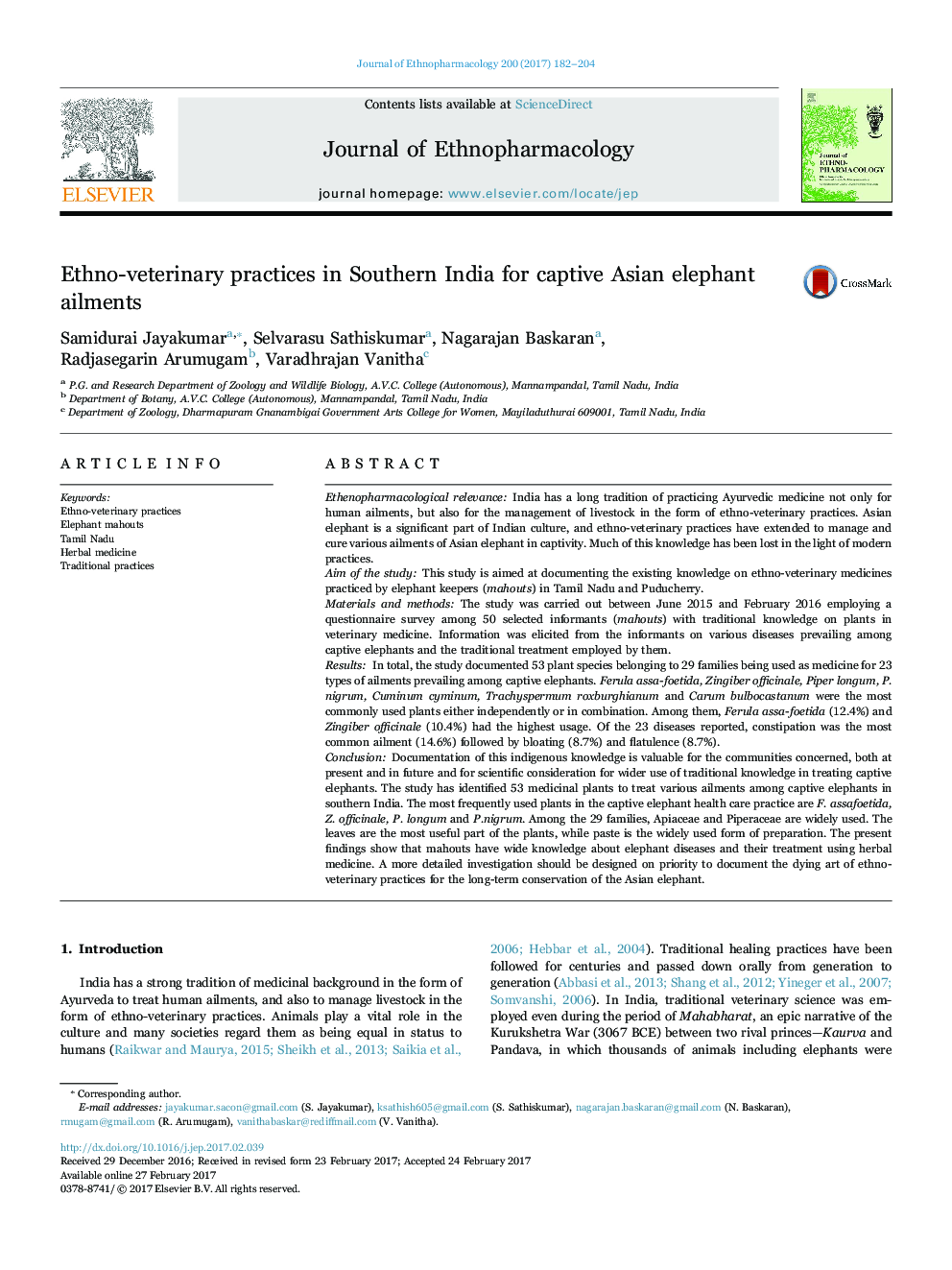| Article ID | Journal | Published Year | Pages | File Type |
|---|---|---|---|---|
| 5556179 | Journal of Ethnopharmacology | 2017 | 23 Pages |
Ethenopharmacological relevanceIndia has a long tradition of practicing Ayurvedic medicine not only for human ailments, but also for the management of livestock in the form of ethno-veterinary practices. Asian elephant is a significant part of Indian culture, and ethno-veterinary practices have extended to manage and cure various ailments of Asian elephant in captivity. Much of this knowledge has been lost in the light of modern practices.Aim of the studyThis study is aimed at documenting the existing knowledge on ethno-veterinary medicines practiced by elephant keepers (mahouts) in Tamil Nadu and Puducherry.Materials and methodsThe study was carried out between June 2015 and February 2016 employing a questionnaire survey among 50 selected informants (mahouts) with traditional knowledge on plants in veterinary medicine. Information was elicited from the informants on various diseases prevailing among captive elephants and the traditional treatment employed by them.ResultsIn total, the study documented 53 plant species belonging to 29 families being used as medicine for 23 types of ailments prevailing among captive elephants. Ferula assa-foetida, Zingiber officinale, Piper longum, P. nigrum, Cuminum cyminum, Trachyspermum roxburghianum and Carum bulbocastanum were the most commonly used plants either independently or in combination. Among them, Ferula assa-foetida (12.4%) and Zingiber officinale (10.4%) had the highest usage. Of the 23 diseases reported, constipation was the most common ailment (14.6%) followed by bloating (8.7%) and flatulence (8.7%).ConclusionDocumentation of this indigenous knowledge is valuable for the communities concerned, both at present and in future and for scientific consideration for wider use of traditional knowledge in treating captive elephants. The study has identified 53 medicinal plants to treat various ailments among captive elephants in southern India. The most frequently used plants in the captive elephant health care practice are F. assafoetida, Z. officinale, P. longum and P.nigrum. Among the 29 families, Apiaceae and Piperaceae are widely used. The leaves are the most useful part of the plants, while paste is the widely used form of preparation. The present findings show that mahouts have wide knowledge about elephant diseases and their treatment using herbal medicine. A more detailed investigation should be designed on priority to document the dying art of ethno-veterinary practices for the long-term conservation of the Asian elephant.
Graphical abstractDownload high-res image (368KB)Download full-size image
